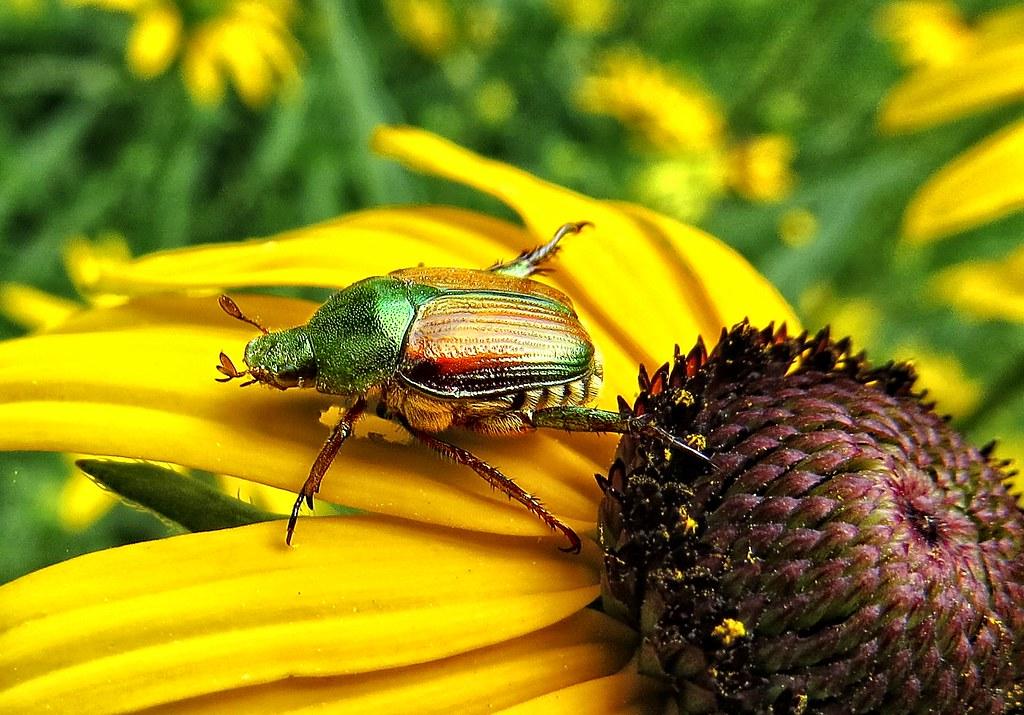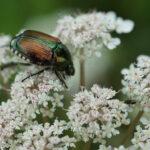Japanese beetles are a common pest that can cause significant damage to plants in gardens and landscapes. These metallic green and bronze beetles are about 1/2 inch long and can be found feeding on the leaves, flowers, and fruit of over 300 different plant species.
Japanese Beetles Guide

Identification: Japanese beetles can be easily identified by their metallic green and bronze color, as well as the white tufts of hair on the sides of their abdomen. They have six small legs, and two large antennae on their head. Adult beetles are typically active during the day and can be found feeding on plants in gardens and landscapes.
Prevention: Preventing Japanese beetles from infesting your garden or landscape is the best way to control them. One of the most effective methods is to keep the adult beetles from laying their eggs in the soil. This can be done by maintaining a healthy lawn and removing any sources of food or shelter for the beetles, such as weeds and tall grass. Another way to prevent Japanese beetles is to use traps that lure the beetles with a pheromone attractant.
Control: If Japanese beetles are already present in your garden or landscape, there are several methods for controlling them. Hand-picking and destroying the beetles is one of the most effective methods, especially for small infestations. For larger infestations, insecticides can be used to kill the beetles. However, it is important to use an insecticide that is safe for the plants and other beneficial insects in your garden or landscape.
Keywords: Japanese beetles, identification, prevention, control, pest, gardens, landscapes, metallic green, bronze, white tufts, hair, abdomen, six legs, two antennae, active, day, feeding, plants, infesting, eggs, soil, healthy lawn, sources, food, shelter, weeds, tall grass, traps, pheromone attractant, hand-picking, destroying, infestations, insecticides, safe, beneficial insects.
Check out our Novel Writing Workbooks
Check out Little Tree Food Forest for articles on food forests and homesteading.
Check out FoodieScapes for articles on growing, fermenting and preserving food
Check out StoryScapes.World for articles on writing.
Subscribe to our newsletter to get information delivered to your inbox on edible landscaping, growing food and medicinal plants, growing mushrooms, foraging, fermentation, food preservation, raising small livestock, and more.









